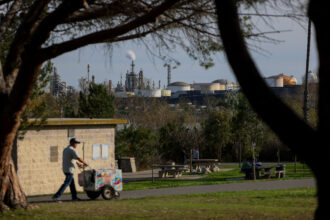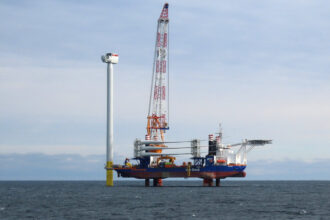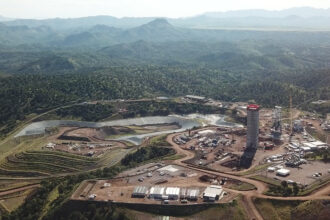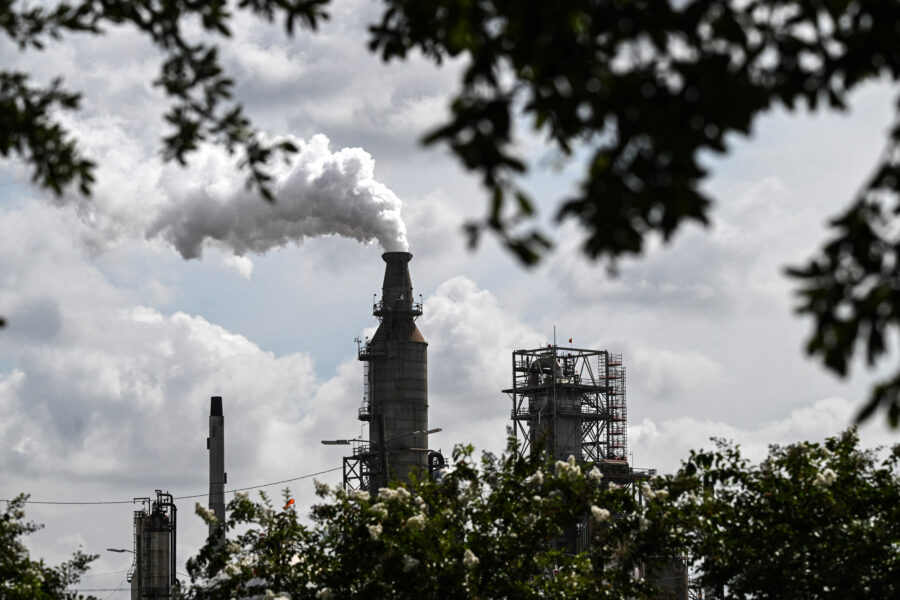Since Pennsylvania’s fracking boom began in 2004, there have been increased levels of radon, a radioactive gas and a trigger of lung cancer, recorded in homes, according to a new study.
The recent analysis out of the Johns Hopkins Bloomberg School of Public Health also shows that indoor radon levels were higher in counties with more drilling. The study was published online Thursday in the journal Environmental Health Perspectives.
Even before drilling took off in Pennsylvania, which has some of the largest frackable oil-and-gas reserves in the nation, the state had a radon problem. According to the Environmental Protection Agency, Pennsylvania has one of the highest radon levels in the nation. That’s why researchers were interested in studying the state; for this investigation, they took advantage of a large state-run database of home radon test results dating back to the mid-1980s.
Radon is an odorless radioactive gas that can seep into homes after venting off of uranium-rich soil and bedrock, such as shale formations rich with natural gas. The radon can enter through cracks in basement floors and walls. Indoor radon exposure contributes to about 21,000 lung cancer deaths in the United States each year, according to the EPA. Radon is one of the top three causes of lung cancer in the country.
There has been increasing concern that local drilling could be yet another major source of radon in Pennsylvania. In fact, the state’s Department of Environmental Protection sponsored its own study, published in January, looking into whether drilling was increasing the risk of public and worker exposure to unhealthy levels of radioactive material, including radon. That study specifically tested for radon in the air around four drilling sites, as well as analyzed radon levels in 22 extracted natural gas examples. Neither analysis revealed high radon levels.
But the new study, examining indoor radon levels, suggests otherwise. Brian Schwartz, professor of environmental health sciences at Johns Hopkins and a study author, told InsideClimate News, “We found evidence there could be a link.”
“If we were looking for reassurances, we didn’t find it,” he said.
State environmental regulators plan to review the study in detail, according to DEP spokeswoman Susan Rickens.
“This is an important paper published in an important journal,” said David Brown, a public health toxicologist based in Pennsylvania. That’s because “it’s directly health related,” he said. Brown was not involved in the study.
The study identified ways fracking could contribute to radon levels, whether through air emissions from the drilling process or emissions produced by of uranium-rich drilling waste, but it didn’t provide definitive proof. The study didn’t actually pinpoint specific radon sources.
Schwartz and colleagues reviewed indoor radon levels from 762,725 buildings, mostly homes, across all of the state’s 67 counties for the years 1989-2013. They also looked at building characteristics, geology and drilling intensity, among other variables. Here’s what they found: Before 2004, or pre-drilling, all counties showed similarly high levels of radon variability and there were several likely sources, such as bedrock. But after 2004, areas of high drilling had a pronounced increase in radon levels compared to areas of low drilling.
Moreover, buildings within 12.5 miles of a drilled well had higher radon levels than buildings further away. Pennsylvania has fracked more than 7,000 gas wells in the last decade; the state is the No. 2 producer of natural gas after Texas.
Julie Weatherington-Rice, an adjunct assistant professor in agricultural engineering at Ohio State University with a background in geochemistry, called the Johns Hopkins report a “very interesting paper” and a novel study. One of her concerns, however, involves the 12.5-mile distance. “That’s pretty far away for gas to travel in any level of concentration, either through the air or the soil,” she said.
According to the study, some of the highest average levels in the state were observed in Reading Prong, a geologic formation in southeastern Pennsylvania. There’s no fracking there, according to Schwartz. But he said this finding wasn’t surprising because that area’s geology is known to have high uranium levels.
Schwartz acknowledged limitations to the analysis. For example, the study authors didn’t have information on some critical details about the buildings where the indoor radon data was collected, such as building year or whether those structures used natural gas for heating or cooking. The paper points out that the upward trend of radon levels since 2004 could be attributed to buildings being more efficient and better able to keep heat—and gases—inside.
About This Story
Perhaps you noticed: This story, like all the news we publish, is free to read. That’s because Inside Climate News is a 501c3 nonprofit organization. We do not charge a subscription fee, lock our news behind a paywall, or clutter our website with ads. We make our news on climate and the environment freely available to you and anyone who wants it.
That’s not all. We also share our news for free with scores of other media organizations around the country. Many of them can’t afford to do environmental journalism of their own. We’ve built bureaus from coast to coast to report local stories, collaborate with local newsrooms and co-publish articles so that this vital work is shared as widely as possible.
Two of us launched ICN in 2007. Six years later we earned a Pulitzer Prize for National Reporting, and now we run the oldest and largest dedicated climate newsroom in the nation. We tell the story in all its complexity. We hold polluters accountable. We expose environmental injustice. We debunk misinformation. We scrutinize solutions and inspire action.
Donations from readers like you fund every aspect of what we do. If you don’t already, will you support our ongoing work, our reporting on the biggest crisis facing our planet, and help us reach even more readers in more places?
Please take a moment to make a tax-deductible donation. Every one of them makes a difference.
Thank you,











